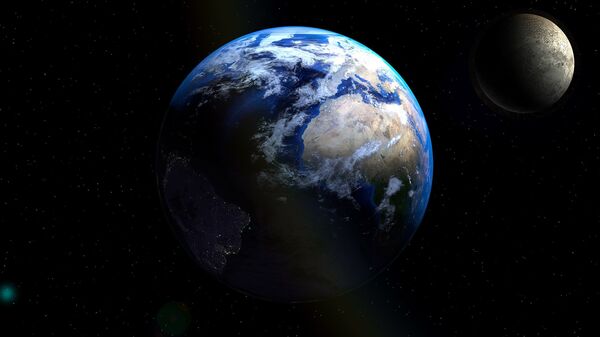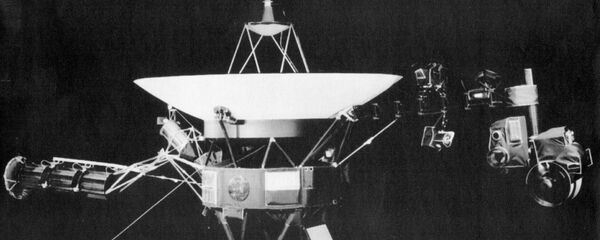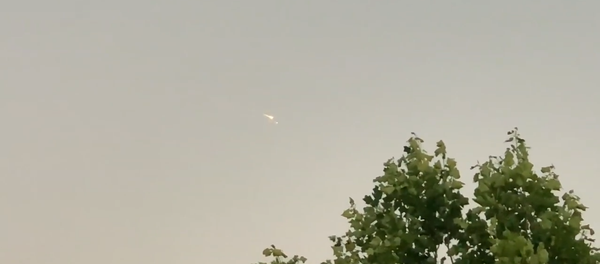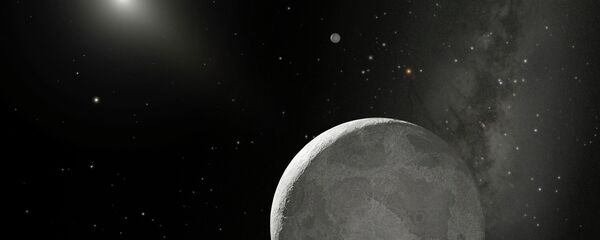Sputnik has discussed this with Dr John Spencer, a project scientist on NASA's New Horizons mission.
Sputnik: So, what is Ultima Thule like?
Dr John Spencer: Well, it's a remarkable object. It is the first time we've seen any of these vast swarm of objects on the edge of the solar system beyond Neptune, which we think a left over building blocks of the planets. They're frozen in time showing us the processes that produced the planet four and a half billion years ago. So we were really excited to see one of these objects up close for the first time.
Sputnik: Now how has its conjoined nature come about then? You're talking about them stuck together how has this been formed?
Dr John Spencer: It must've happened very gently for these two objects, which look like they formed separately to have come together and not destroyed each other in the collision. It's telling us that whatever process it was that brought them together was happening slowly and that's what you needed in order to build planets.
READ MORE: 'Bat Shadow' 200 Times Size of Solar System Spotted by Hubble Telescope (PHOTO)
You have to bring things together slowly so they don't just smash into smaller pieces and we are seeing that process frozen in time. We don't understand how that happened yet. We had a big discussion on the science team about how could this have happened, how could they have come together so gently and we don't understand that yet.
Sputnik: What can the global audience learn by studying Ultima Thule's topography and composition and what specifically are you most excited about in terms of your area of expertise that you want to find out further information?
Out there in the Kuiper Belt those processes have been frozen and we can observe them as they were happening four and a half billion years ago. So those are the big sort of questions that we are answering, which I think are of interest to anyone who cares about where we came from and what we're doing here orbiting the Sun.
And then personally, I'm really looking forward to seeing the detailed images. We have much more detailed images on the spacecraft. We think we were successful in capturing that given the telemetry we've got from the spacecraft. So we expect that we will be able to see much more detailed images in a couple of months that will maybe tell us more about how this collision happened, how these individual spherical objects were formed before they came together, what processes have happened since. So I think we're going to learn a lot more when we see the more detailed images.
Sputnik: Does the Ultima Thule have moons and if so what can they look like and what does it tell us about the Ultima Thule?
Dr John Spencer: It's another thing we're really interested in is whether there are moons around this object. We have looked for moons in some of the data that we've sent back already and we haven't found any but there might still be other small moons orbiting around and we haven't sent back all the data back yet so they could be hiding the data that we haven't looked at yet.
Sputnik: So what happens next for the New Horizons probe?
Dr John Spencer: We will continue out of the Solar System. It will take us more than a year to send back all the data that we took, and we will be continuing to look at the other small objects in the Kuiper Belt.
READ MORE: NASA's Parker Solar Probe Breaks Record for Closest and Fastest Approach to Sun
We will be looking, making distant observations of larger objects out there, some of the dwarf planets and we will be continuing to investigate the solar wind that is a stream of gas that comes out from the Sun that eventually runs into interstellar winds about three times further from the Sun than we are right now, and we will be continuing to talk to the spacecraft for many years to come and we hope to learn more about the interaction between the solar wind and the interstellar wind as we get closer to that boundary. So there's a lot more for the spacecraft to do.
The views expressed in this article are solely those of Dr John Spencer and do not necessarily reflect the official position of Sputnik.




